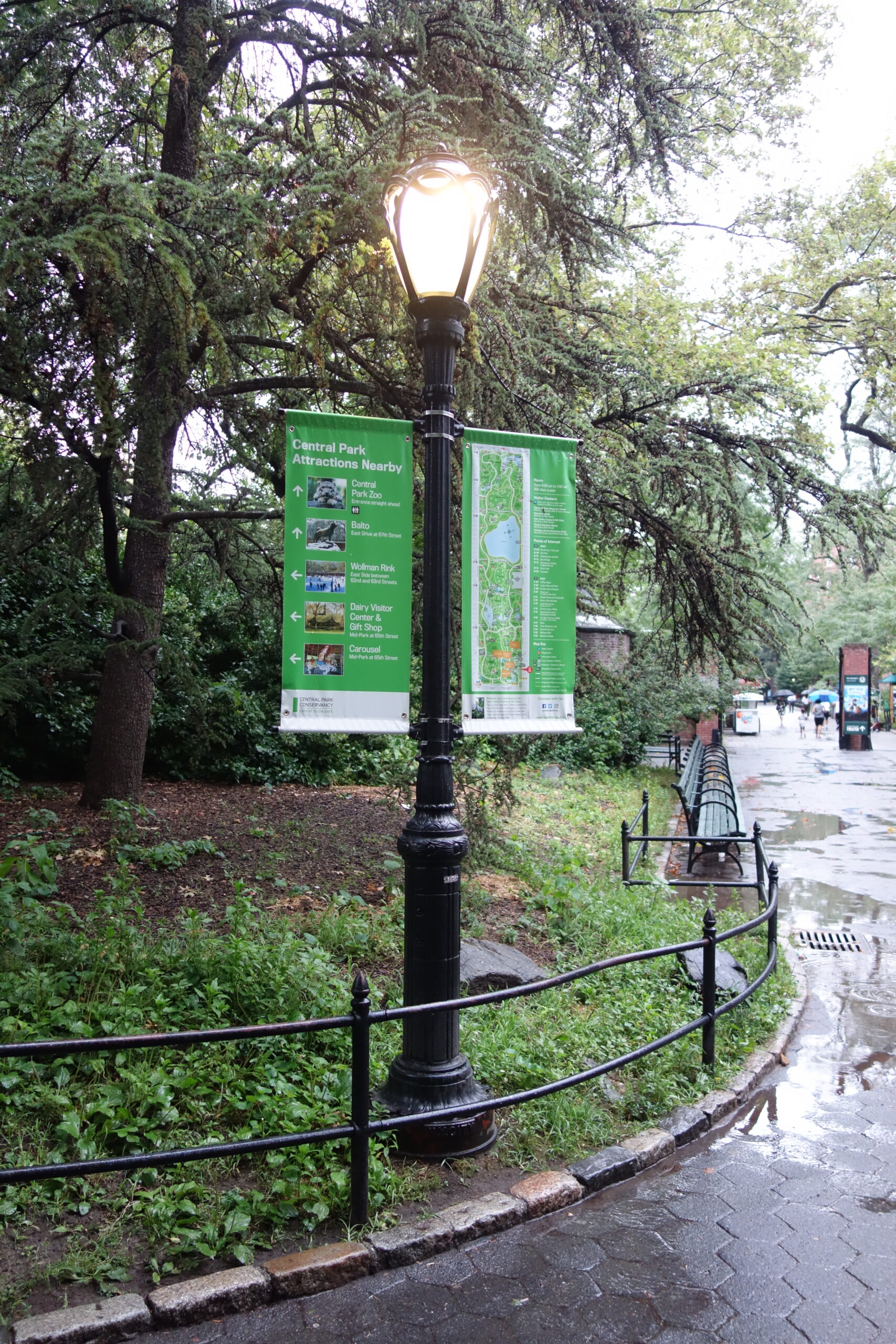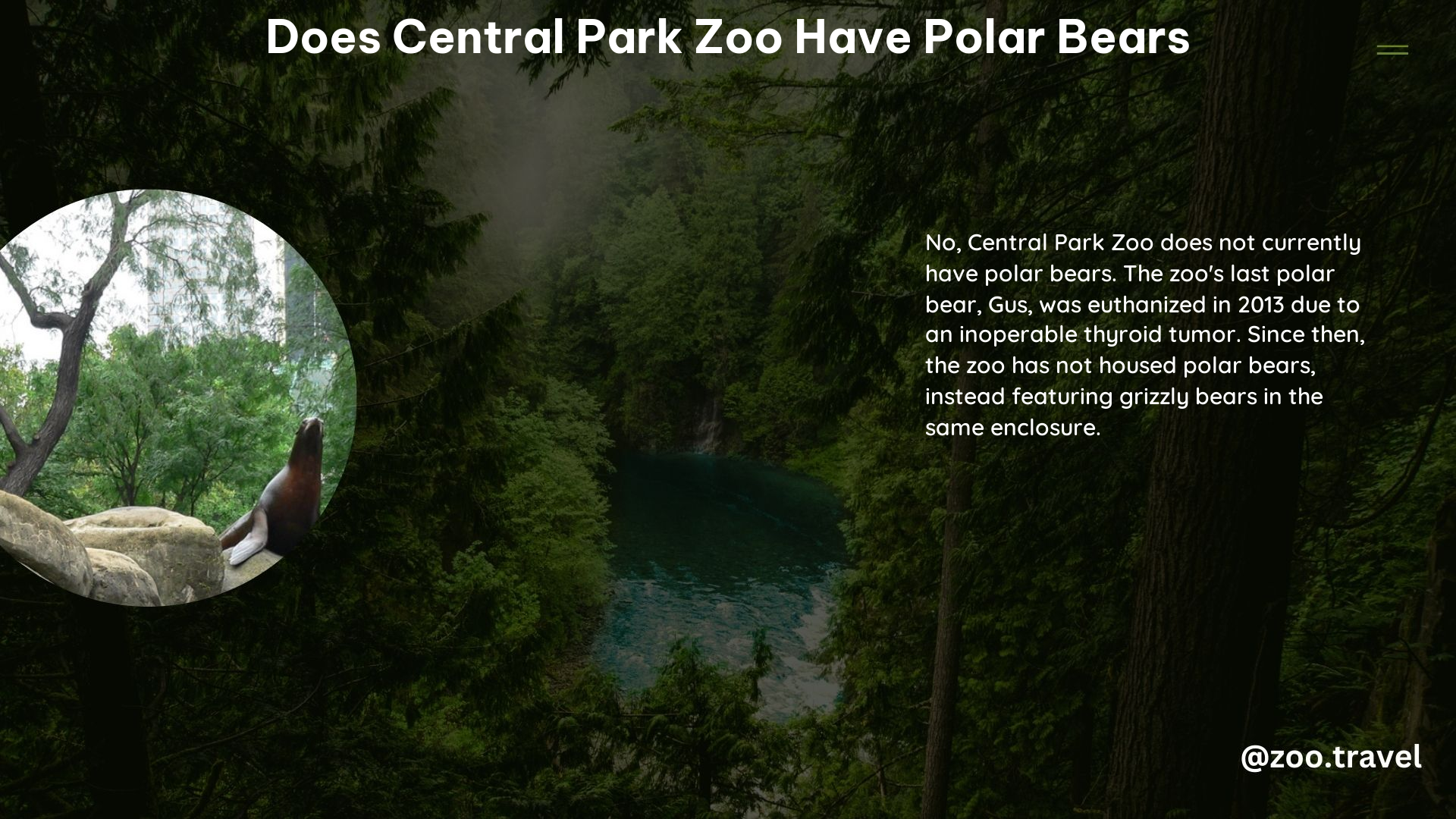Central Park Zoo, one of the most popular zoos in New York City, is home to a diverse array of animals, but unfortunately, it does not currently have any polar bears. The zoo’s last polar bear, Gus, passed away in 2013 due to an inoperable thyroid tumor, and since then, the polar bear exhibit has been closed.
The Rise and Fall of Gus, the Beloved Polar Bear

Gus was a well-known and beloved polar bear who lived at the Central Park Zoo for over 25 years. During his lifetime, he attracted over 20 million visitors, making him one of the zoo’s most popular attractions. Gus was famous for his neurotic behavior, which included obsessive swimming, and he was treated with Prozac and an enrichment program to alleviate his stress and boredom.
Despite the zoo’s efforts to provide Gus with the best possible care, his health eventually declined, and in 2013, he was euthanized due to an inoperable thyroid tumor. The loss of Gus was a significant blow to the zoo and its visitors, who had grown to love the charismatic polar bear.
The Closure of the Polar Bear Exhibit

After Gus’s death, the Central Park Zoo made the decision to close the polar bear exhibit and replace it with grizzly bears. This decision was likely made due to the challenges of maintaining a healthy and thriving polar bear population in the zoo’s relatively small enclosure.
Polar bears are large, powerful animals that require vast, icy habitats to thrive. In the wild, they can roam hundreds of miles in search of food and suitable denning sites. Keeping polar bears in captivity, especially in a relatively small urban zoo like Central Park, can be extremely challenging and often results in behavioral issues and health problems.
The Current Animal Residents of Central Park Zoo
While the Central Park Zoo no longer has polar bears, it is still home to a variety of other fascinating animals. Some of the zoo’s current residents include:
- California sea lions
- Chinstrap penguins
- Gentoo penguins
- Grizzly bears
- Snow leopards
- Red pandas
- Pallas’s cats
- Saki monkeys
- Hamadryas baboons
These animals come from a wide range of habitats, from the icy tundra to the lush forests, and they provide visitors with the opportunity to learn about and appreciate the diversity of the natural world.
The Importance of Animal Welfare in Zoos
The closure of the polar bear exhibit at the Central Park Zoo highlights the importance of prioritizing animal welfare in zoos. While zoos can play a valuable role in conservation, education, and research, they also have a responsibility to ensure that the animals in their care are provided with the best possible living conditions.
Keeping large, charismatic animals like polar bears in captivity can be particularly challenging, as their complex behavioral and environmental needs are often difficult to replicate in a zoo setting. As a result, many zoos have made the decision to phase out or limit their polar bear exhibits in favor of other species that can be more easily accommodated.
The Future of Polar Bears in Zoos
Despite the challenges of keeping polar bears in captivity, some zoos and conservation organizations are exploring new ways to support these iconic Arctic animals. For example, some zoos are partnering with research institutions to study polar bear behavior and physiology, with the goal of developing more effective captive management strategies.
Additionally, some zoos are focusing on supporting polar bear conservation efforts in the wild, through educational programs, fundraising, and advocacy. By raising awareness about the threats facing polar bears, such as climate change and habitat loss, zoos can play a crucial role in protecting these animals and their fragile Arctic ecosystems.
While the Central Park Zoo may not have polar bears in the foreseeable future, the zoo’s commitment to animal welfare and conservation remains strong. By showcasing a diverse array of species and providing visitors with engaging educational experiences, the Central Park Zoo continues to inspire and inform the public about the wonders of the natural world.
Conclusion
In conclusion, the Central Park Zoo does not currently have polar bears, as its last polar bear, Gus, passed away in 2013. The zoo’s decision to close the polar bear exhibit and replace it with grizzly bears was likely due to the challenges of maintaining a healthy and thriving polar bear population in the zoo’s relatively small enclosure.
While the Central Park Zoo no longer has polar bears, it remains a vibrant and engaging destination, home to a diverse array of animal species. By prioritizing animal welfare and supporting conservation efforts, the zoo continues to play a vital role in educating the public and inspiring a deeper appreciation for the natural world.
Reference:
– Central Park Zoo
– Gus the Polar Bear
– Polar Bear Conservation
